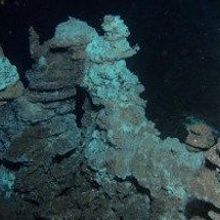eukaryote

The Long and Winding Road to Eukaryotic Cells
Amanda Heidt | Oct 17, 2022 | 10+ min read
Despite recent advances in the study of eukaryogenesis, much remains unresolved about the origin and evolution of the most complex domain of life.

Infographic: Evolutionary Leaps Leading to Modern Eukaryotes
Amanda Heidt | Oct 17, 2022 | 2 min read
A lot happened in the hundreds of millions years separating the first and last eukaryotic common ancestors, but when and how most features arose remains a mystery.

Genomes Across the Tree of Life
The Scientist | 2 min read
Researchers turn to unique eukaryotes to better understand how DNA is organized in 3D space.

RNA Pioneer Christine Guthrie Dies at 77
Amanda Heidt | Sep 1, 2022 | 5 min read
Guthrie established foundational concepts in the field of pre-mRNA splicing during her career at the University of California, San Francisco.

Slideshow: Examples of Eukaryotic Horizontal Gene Transfer
Christie Wilcox, PhD | Jul 5, 2022 | 4 min read
Horizontally transferred genes play significant roles in eukaryotic genomes

Ancestral Bacteria May Have Invaded Early Eukaryotic Cells
Clare Watson | Jun 1, 2022 | 2 min read
The discovery that a group of cell-infecting bacteria lived roughly 2 billion years ago stirs a longstanding controversy around which came first: phagocytosis or mitochondria.

Picozoans Are Algae After All: Study
Christie Wilcox, PhD | May 6, 2021 | 5 min read
Phylogenomics data place the enigmatic plankton in the middle of the algal family tree, despite their apparent lack of plastids—an organelle characteristic of all other algae.

Giant Viruses Can Integrate into the Genomes of Their Hosts
Amanda Heidt | Nov 19, 2020 | 4 min read
Rather than introducing small chunks of DNA as other viruses do, some giant viruses can contribute more than 1 million base pairs to a host’s genome, broadening the ways in which viruses may shape eukaryote evolution.

Lipid Droplets Are Intracellular Bacteria-Fighting Machines
Ruth Williams | Oct 15, 2020 | 3 min read
Far from being inert fat-storage depots within cells, these lipid-loaded organelles recruit immune proteins and block bacterial growth.

Elusive Asgard Archaea Finally Cultured in Lab
Nicoletta Lanese | Aug 12, 2019 | 3 min read
The 12-year-long endeavor reveals Prometheoarchaeum as a tentacled cell, living in a symbiotic relationship with methane-producing microbes.

Opinion: Archaea Is Our Evolutionary Sister, Not Mother
Morgan Gaia, Violette Da Cunha, and Patrick Forterre | Jun 1, 2018 | 4 min read
The ancient organisms appear to be more closely related to eukaryotes than previously appreciated.

Archaea Family Tree Blossoms, Thanks to Genomics
Amber Dance | Jun 1, 2018 | 10+ min read
Identification of new archaea species elucidates the domain’s unique biology and sheds light on its relationship to eukaryotes.

A Newly Identified Species Represents Its Own Eukaryotic Lineage
Katarina Zimmer | Nov 20, 2017 | 2 min read
The 10-micrometer-long flagellate cell might have a big story to tell about the evolution of eukaryotes.

Opinion: Life’s X Factor
Nick Lane | Aug 4, 2015 | 4 min read
Did endosymbiosis—and the innovations in membrane bioenergetics it engendered—make it possible for eukaryotic life to evolve?

Prokaryotic Microbes with Eukaryote-like Genes Found
Jyoti Madhusoodanan | May 6, 2015 | 3 min read
Deep-sea microbes possess hallmarks of eukaryotic cells, hinting at a common ancestor for archaea and eukaryotes.

Algae Get Help to Go to Extremes
Sabrina Richards | Mar 7, 2013 | 3 min read
A red alga appears to have adapted to extremely hot, acidic environments by collecting genes from bacteria and archaea.

Opinion: Learning from Transcriptomes
David Smith | Nov 28, 2012 | 2 min read
In the largest microbial eukaryote genetic sequencing effort ever attempted, researchers are investigating the transcriptomes of 700 marine algae species.
Bacteria Breed Multicellularity?
Hayley Dunning | Aug 15, 2012 | 3 min read
A single-celled relative of animals forms colonies when exposed to a bacterial product, hinting at the possible origins of multicellularity.
A New Branch of Life?
Jef Akst | May 1, 2012 | 1 min read
Researchers investigate a microorganism that may warrant a new eukaryotic kingdom in the classification of life.
